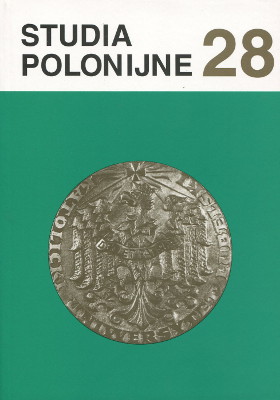Polonia okresu międzywojennego w Związku Sowieckim narzędziem antypolskiej propagandy. Eksperyment rejonów autonomicznych
Polonia in the Inter-war Period in the Soviet Union as a Tool of Anti-Polish Propaganda. The Experiment with Autonomic Regions
Author(s): Artur ŻyckiSubject(s): History, Recent History (1900 till today), Interwar Period (1920 - 1939)
Published by: Towarzystwo Naukowe KUL & Katolicki Uniwersytet Lubelski Jana Pawła II
Summary/Abstract: The treaty drawn in Riga on 18th March 1921 had eventually fixed the border between Poland and the Soviet Union. It also regulated various issues concerning the Polish population living in the territory of the USSR. In the inter-war period more 1.200.000 Poles lived in this state, 80% of whom lived in the so-called borderlands. Polonia in the USSR occupied a special place in the Polish Diaspora in the world. The Soviet authorities from the beginning went about indoctrination of that social group, in order to make a new Soviet „model” of the Pole; it was the communists' intention to make the personnel for the future Polish Soviet Republic. The Poles were „persuaded” to accept the Soviet authorities by means of violence and broad propagandist actions. Aside to the press system, publications in the Polish language were extended. In the beginning of the 1930s in the USSR 295 books were published in Polish a year and a dozen or so titles of the Polish press. It was skilfully used not only to indoctrinate one's own society, but also as an instrument in anti-Polish propaganda and campaign.A good opportunity for this was supposed to be the 1st Convention of Poles from Abroad. It took place on 14th-21st July 1929 in Warszawa. The Organisation Committee did not agree, however, that a delegation of Poles from the USSR should participate in it. The Soviet authorities responded by provoking a real anti-Polish campaign in the press. The Soviet Union organised then „spontaneous” protests, demonstrations, and riots. During the Convention the Soviet mass media presented it as a complete failure and protested against any resolutions of that Convention. The communist authorities in Moscow organised in August their own convention and invited a workers' delegation from Poland.Another important endeavour to make the Soviet man come true in the inter-war period in the USSR was to establish the so-called Polish autonomic regions. This unprecedented idea is well known in literature as the Soviet experiment with Polonia. As a result of this, in the territory of the USSR two Polish autonomic regions were established: the Julian Marchlewski autonomic region in the Ukraine and the Feliks Dzierżyński autonomic region in Belarus. In all party and state institutions of the autonomic regions the Polish language was an official language. The national autonomy granted to Poles in the USSR was intended to be an essential factor of destabilisation; it destabilised the home policy of the Second Polish Republic. Despite propagandist efforts, the communists failed to accomplish some important successes in the indoctrination of Poles. The most significant evidence of this was their complete failure in collectivisation in the two Polish national regions. This was also later on one of the reasons why the Polish autonomic regions were abandoned, and the Polish people were subjected to repression. In practice the USSR had never satisfied authentically important needs of the Polish national minority living there.
Journal: Studia Polonijne
- Issue Year: 2007
- Issue No: 28
- Page Range: 107-116
- Page Count: 10
- Language: Polish

